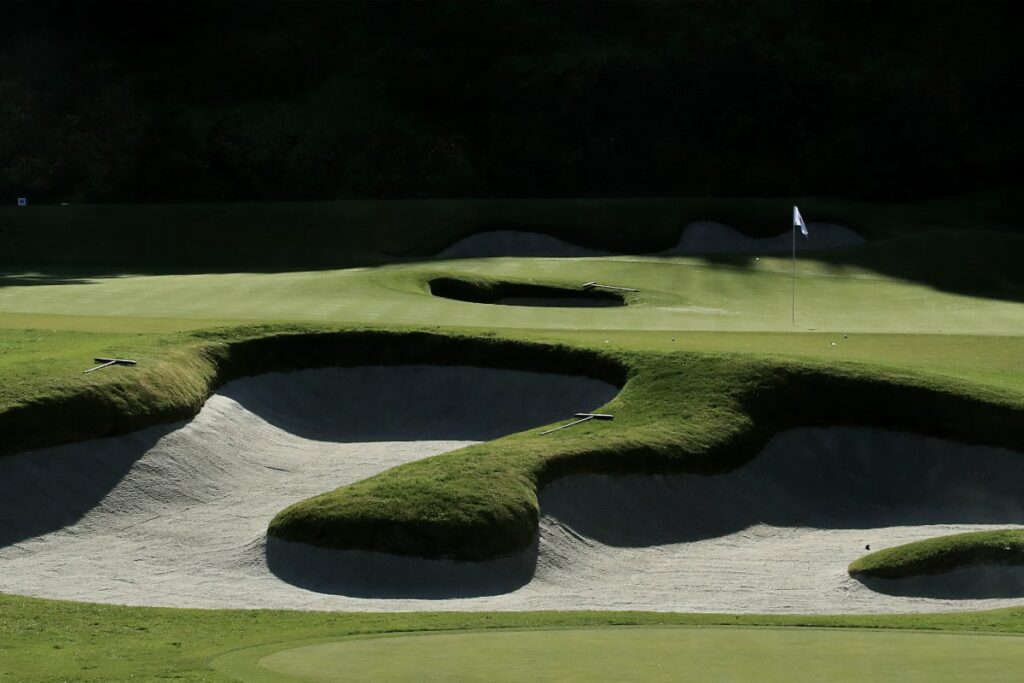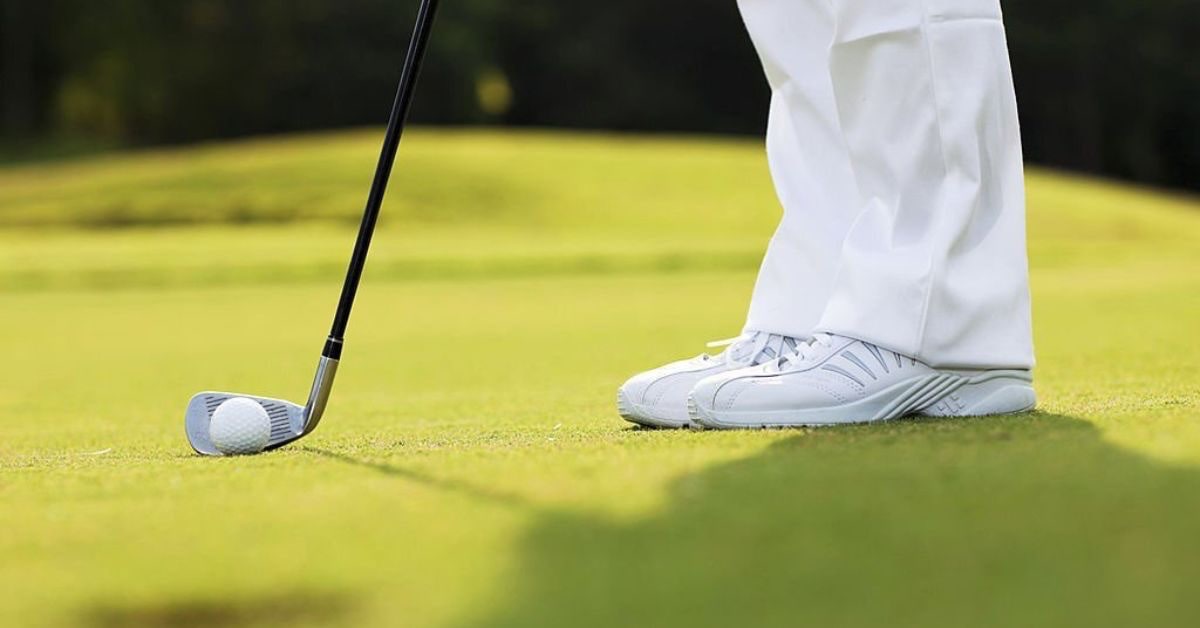Ninety-nine times out of a hundred, the putter is all you need on the green.
But, what about when the shoulder of a putting green cuts into your direct line to the hole? Alternatively, an obstacle like the bunker on the 6th green at Riviera?
In this article, you’ll learn if you can use a wedge on the green — along with reference to the USGA and R&A rules of golf and several interesting scenarios.
Can You Use a Wedge on the Green
Yes, you can use a wedge on the green. There are no rules in golf that restrict you from chipping on the green. In rare cases, the shape of the green prevents a direct putt to the hole. However, it’s best avoided as chipping can damage the surface.
Are You Allowed to Chip on the Green?
Neither the USGA nor R&A have any restrictions on the act of chipping on the green.
It happens surprisingly frequently on the pro tour. There are plenty of examples of professional golfers opting to chip rather than putt when on the putting surface.
For instance, Rory McIlroy chipped on the green at Oakmont in the 2016 U.S. Open due to the rough between his ball and the hole. It would have been virtually impossible to putt the ball close, so he used his wedge on the green to get up and down for birdie.
Check out the compilation video below from the PGA Tour, which shows several clips where pros decided to use a wedge on the green rather than a putter:
So, if the pros can use a wedge on the green — can you?
Ultimately, it depends on the following questions:
- Are you good enough for the shot?
Chipping from a very tight lie is one of the hardest shots in golf, and takes a high level of skill to execute well. While tour pros make it look easy, the average golfer is likely to take a huge amount of turf or blade it across the green. Remember the saying — your worst putt is better than your worst chip!
- Is it likely to damage the green?
Greenskeepers put their heart and soul into maintaining the condition of the putting surface. Taking a divot would be sacrilege — think twice! If you decide to take on the chip, try your best to clip the ball with a short, shallow swing.
- Would you be any worse off by putting?
While some greens have quirky shapes, slopes, and obstacles that might call for a chip, it’s probably safer to putt the ball instead. The flat stick is trustworthy and reliable, and the majority of tour pros will use it even when chipping is an option.
It’s vital to consider all these questions before deciding to chip on the putting surface. It could save you the embarrassment of a duff, blade, or worse — damaging the green.
Why Chip on the Green?
Most golfers will play their whole lives without needing to use a wedge on the green.
Even when the fringe cuts into your perfect line, it’s often a safer play for the average golfer to use the putter than to risk using a wedge.
However, some unique scenarios are designed in such a way that makes it easier to get the ball close to the hole with a chip, than with a putt. In such cases, the wedge used around the greens might be used on the putting surface itself.
For example, take the 6th green at Riviera Country Club. This quirky green, designed by George C. Thomas, features a round bunker positioned dead center of the green.
Subsequently, many of those who play the course are faced with a very challenging two-putt, or a chance to chip the ball close to the pin for a tap-in.

Can You Take a Divot on the Green?
While you are allowed to use any club on the green, you can’t take a divot. There are no strict rules, but it’s generally very poor etiquette to do so.
So, if you decide to chip on the green, make sure to take a shallow swing and “pick” the ball off the surface. Use the natural loft of the club to deflect the ball into the air.
Essentially, this will help prevent you from taking any ground after the ball.
But what if your ball lands on the green of a different hole?
For some, this scenario might be all too familiar! In this instance, the rules of golf state that you must take free relief. That’s to say, don’t take your shot from on the green!
“When there is interference by a wrong green, you must not play the ball as it lies. Instead, you must take free relief by dropping the ball a club length away from the green at the nearest exit point.”
USGA Rule 13.1(f)
Ultimately, you should aim to never take a divot on the putting green. Greenskeepers invest hours of their time in producing the surface, so treat it with respect!

Conclusion
In summary, you can use a wedge on the green. Neither the USGA nor the R&A has any rules stating that you must use a putter when on the putting green.
However, it’s best practice to avoid chipping on the green where possible. Not only does it take high levels of skill to chip off very tight lies, but it’s also considered bad etiquette.
Remember, the maintenance staff at the course have spent hours preparing the putting surface for everyone to enjoy. Don’t take the risk of creating a divot!


